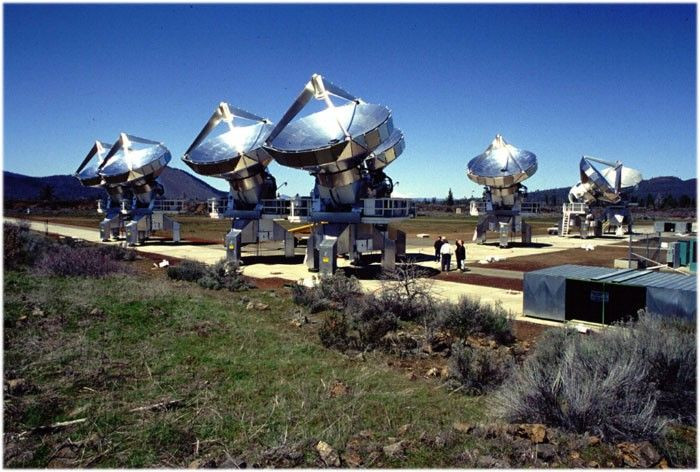SETI Donation Boost Revives Hunt For Alien Life in Outer Space

The Mountain View, Ca.-based SETI (Search of Extraterrestrial Intelligence) Institute got a massive financial boost from donors that will enable its 42-radio telescope dishes near Mount Shasta to resume search for sounds of intelligent life form in the Universe.
"Contact" star Jodie Foster and other affluent donors came up with more than $200,000 to save the SETI Institute, which ran out of money earlier this year -- forcing it to shut down the Allen Telescope Array (ATA) project in April.
SETI, which was founded in 1985 and funded in the 1990s by Hewlett Packard co-founder David Packard, said it has raised $210,000 in donations that will enable it to turn on the radio antennas by September. The antennas will be recalibrated and will be in operation 24 hours a day through the end of 2011 while it continues its fundraising efforts.
Seth Shostak, senior astronomer at the SETI Institute, said he was filled with gratitude and was overwhelmed by the fact that though economic times are tough, "people still think this very fundamental question -- is there somebody out there as intelligent or more so than us? -- is important and worth doing."
"There is something very quintessentially American about it," Shostak added. "There's something in our culture about being willing to try long-shot but high-stakes experiments in the name of exploration."
The search for life in outer space is not new. The idea of monitoring signs of life in outer space through radio waves originated over 100 years ago. However, the idea was made into a reality by Cornell astronomer Frank Drake in the 1960s.
In 2007, the search for extraterrestrial life-form gathered momentum after Microsoft co-founder Paul Allen and others donated $50 million. The money was used for constructing the ATA, the largest radio telescope array in the world devoted primarily to SETI research, and turning it on. The ATA comprise of 42 radio telescope dishes, each 20 feet wide, located at Hat Creek Radio Observatory in Northern California. The dishes work together to scan the outer space for signs of life.
In subsequent years, however, cuts in grants and budgets forced SETI Institute, which has 140 employees and an $18 million annual budget, to shut down the ATA, which requires a full staffing of about 10 people at a cost of $2.5 million a year, in April 2011.
But there are a few people like Jodie Foster, the star of the 1997 sci-fi blockbuster "Contact," and Bill Anders, a former Apollo 8 astronaut, who weren't ready to see ATA die.
"In Carl Sagan's book/movie 'Contact,' a radio signal from a distant star system ends humanity's cosmic isolation and changes our world," Foster wrote in a message with her donation. "The Allen Telescope Array could turn science fiction into science fact, but only if it is actively searching the skies. I support the effort to bring the array out of hibernation."
Agrees Anders. "It is absolutely irresponsible of the human race not to be searching for evidence of extraterrestrial intelligence," Anders wrote with his donation.
Larry Niven, author of the "Ringworld" science fiction series, is another prominent donor.
According to Bob Sanders, a spokesman for University of California-Berkeley, the $210,000 raised in funds is only a fraction of what is needed but it is still positive news that many people don't want the project to die.
"It's a great resource up there," Sanders said of the Mount Shasta site where ATA is located. "It's a very radio quiet area and a great research location."
Thomas Pierson, CEO of the SETI Institute, is hopeful that ATA will not die again. "For those who are interested in understanding whether intelligent life might be out there elsewhere in our galaxy, the Allen Telescope Array and our SETI team doing the research is the best bet," Pierson said, adding that he is hopeful that the U.S. Air Force, which SETI Institute helps to track space debris that could damage satellites, will also donate.
The ATA also helps in the research into black holes, pulsars and magnetic fields in the Milky Way.
Want to help SETI Institute continue its search for alien life-form? Click here to donate.
© Copyright IBTimes 2024. All rights reserved.




















